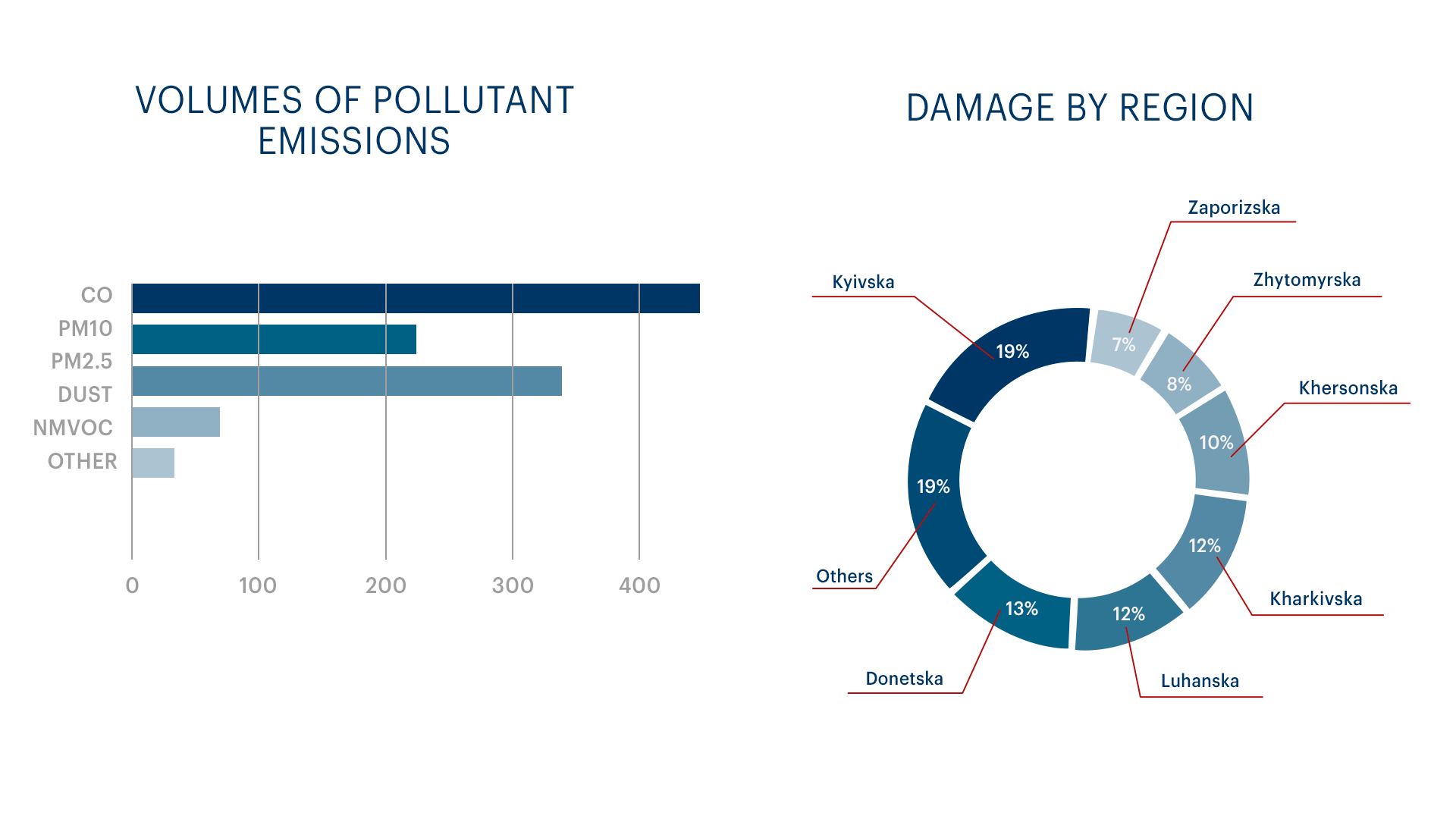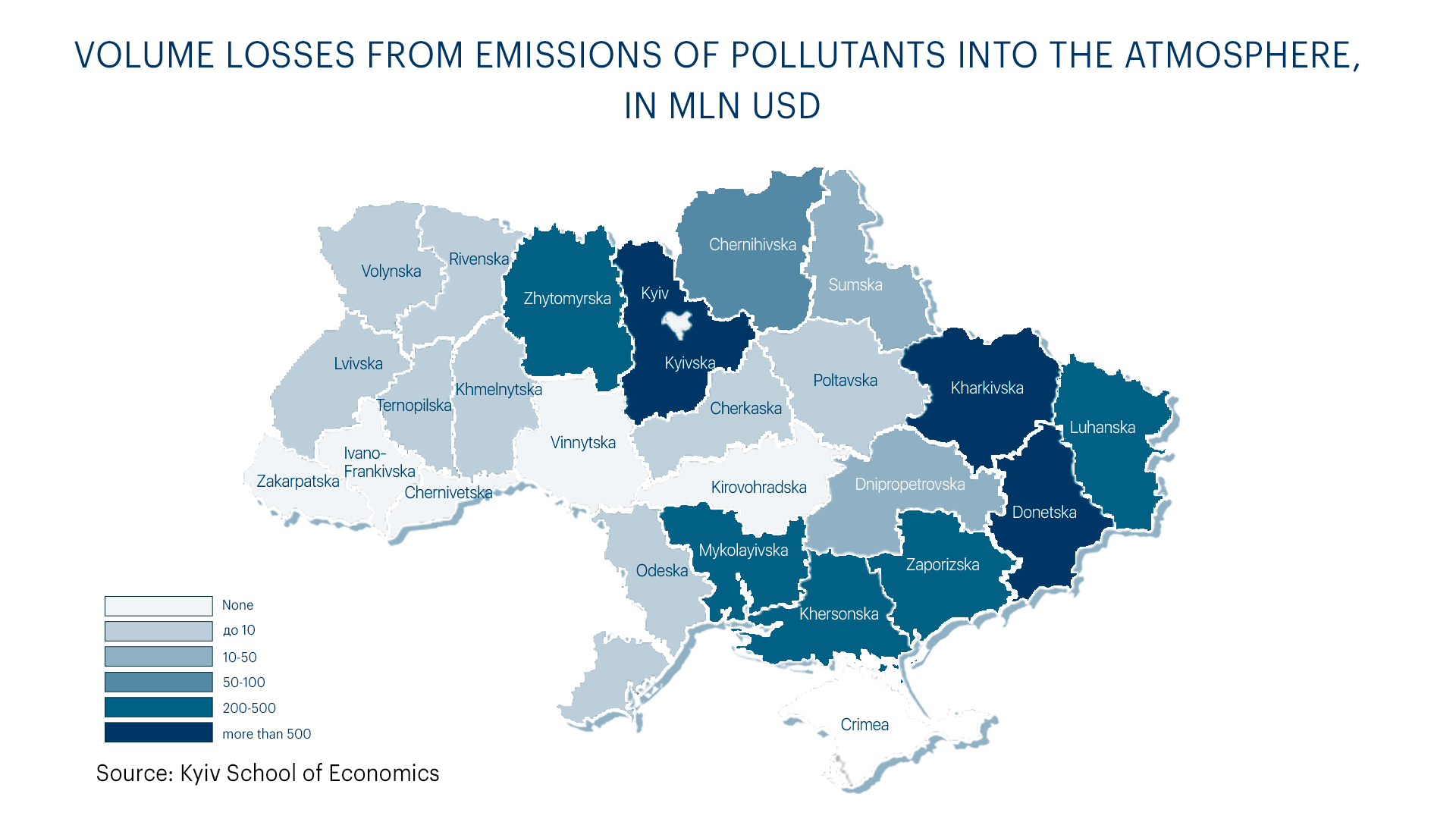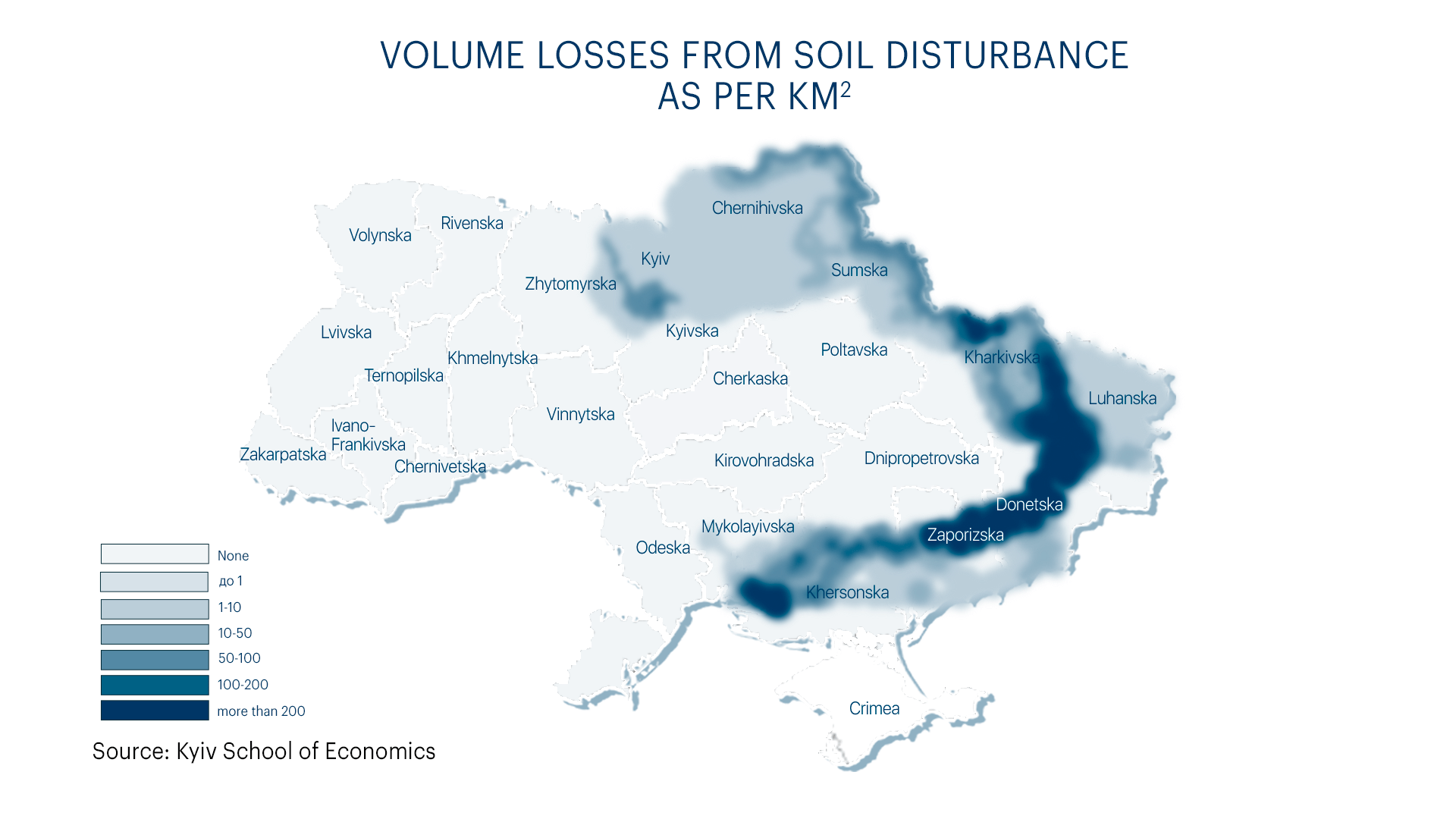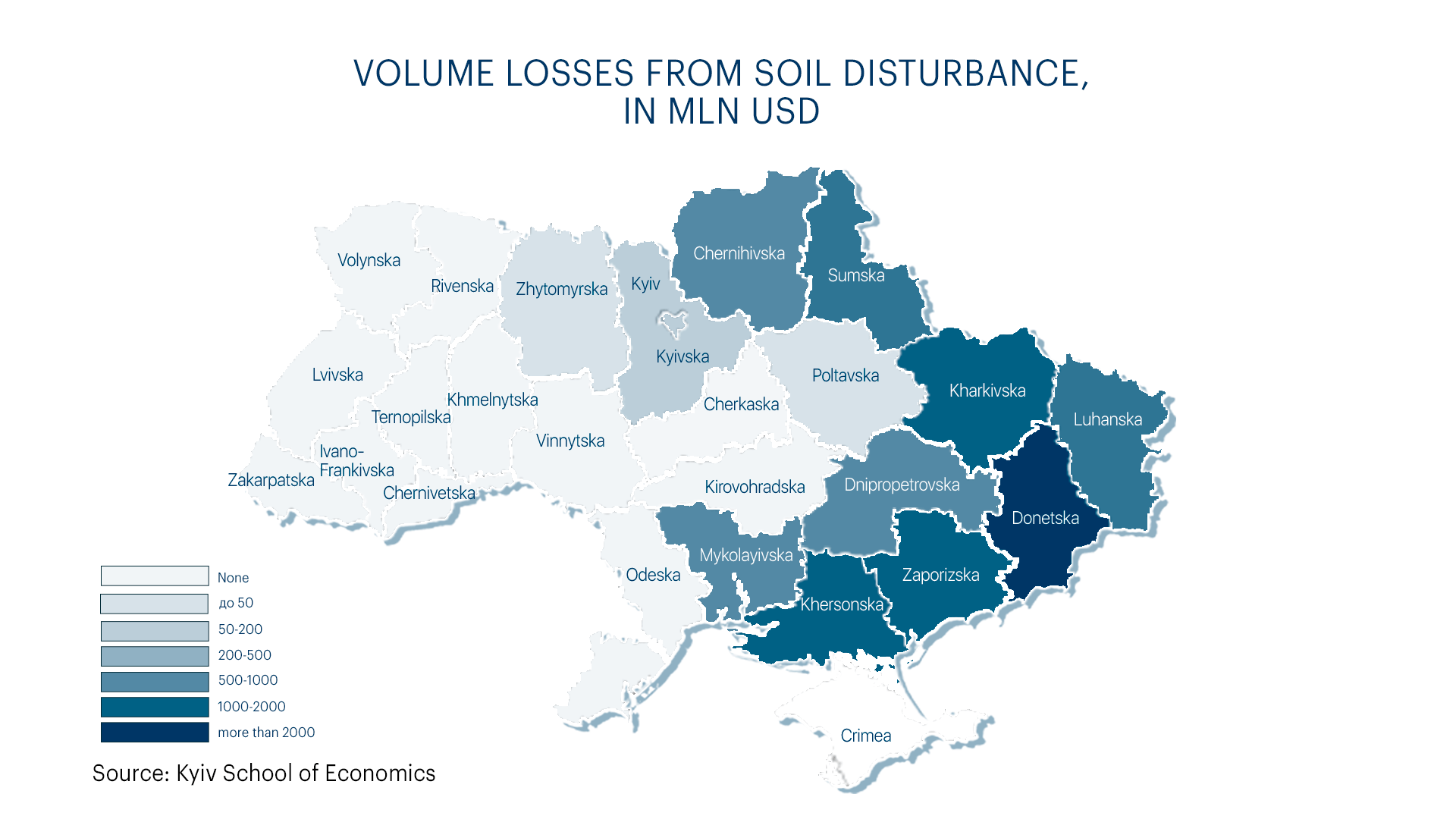- Kyiv School of Economics
- About the School
- News
- What environmental consequences has Ukraine suffered during the war, apart from the damage caused by the explosion of the Kakhovka hydroelectric power station?
What environmental consequences has Ukraine suffered during the war, apart from the damage caused by the explosion of the Kakhovka hydroelectric power station?
20 June 2023
As of May 2023, about 1.2 million tonnes of pollutants have already been released into the air as a result of hostilities, including 430,000 tonnes of carbon monoxide, 700,000 tonnes of dust, and 40,000 tonnes of non-methane volatile organic compounds, as well as a significant amount of heavy metals and other harmful substances.
This is according to the analysis carried out by the KSE Institute (an analytical unit of the Kyiv School of Economics) project Russia Will Pay.
Since the beginning of the war, Ukraine has faced significant consequences of the hostilities, which have not only led to direct destruction and economic losses, but have also affected the environment and resulted in significant emissions of pollutants into the air. The consequences of these emissions have been catastrophic, with total losses already reaching almost $4.2 billion. In particular, $1.8 billion was caused by forest fires, $1.6 billion by grass fires and $752 million by the burning of oil and oil products. This amount does not include the direct damage caused by the explosion of the Kakhovka hydroelectric power station in the Kherson region by the Russian occupiers on 6 June.
Forest and grass fires caused by the hostilities have become the main source of emissions. According to the Zoï environmental network and the Regional Eastern European Fire Monitoring Centre, they covered 46.6 thousand hectares and more than 471 thousand hectares respectively.
Fighting fires along the front line becomes dangerous during hostilities and before the areas are demined, maintaining the fire hazard and potentially affecting air quality in the future.
In addition, more than $1 billion in additional air pollution emissions will be required to restore damaged housing, utilities and transportation infrastructure.


Large areas of Ukraine have experienced significant damage to the surface soil layer as a result of the construction of fortifications, the explosion and burning of munitions, military manoeuvres, etc. According to estimates by the Kyiv School of Economics and the Zoï Environment Network, 186,000 square kilometers of land, or almost 31% of Ukraine’s territory, are at risk of damage and pollution. Of this, more than 20,000 square kilometers are more than 75% damaged. The Donetsk, Kharkiv and Zaporizhzhya regions have suffered the most damage.
Overall, the total damage to land and soil caused by the hostilities is estimated at $9.8 billion. This puts the use of damaged land at risk and requires reclamation, demining and munitions clearance.


The data on environmental damage are based on information as of May 2023 and do not take into account direct losses caused by the explosion of the Kakhovka HPP. According to preliminary estimates, the damage caused by the destruction of the Kakhovka HPP exceeds UAH 55 billion. This was announced by the Prime Minister of Ukraine Denys Shmyhal at a government meeting. The team of the KSE Institute’s Russia Will Pay project is actively working to record and analyse the direct losses and environmental consequences of this tragedy. The full report will be published soon.
Detailed data on the destruction and damage to Ukraine’s infrastructure were collected by the Kyiv School of Economics (KSE Institute) in cooperation with the Zoï Environment Network (Geneva) as part of the project to develop independent methodologies for analytical assessment of infrastructure damage and economic losses caused by Russia’s aggression, implemented by the KSE Institute in cooperation with the USAID Economic Support to Ukraine Project. The contents of this publication are the sole responsibility of the KSE Institute and do not necessarily reflect the views of USAID or the United States Government.
